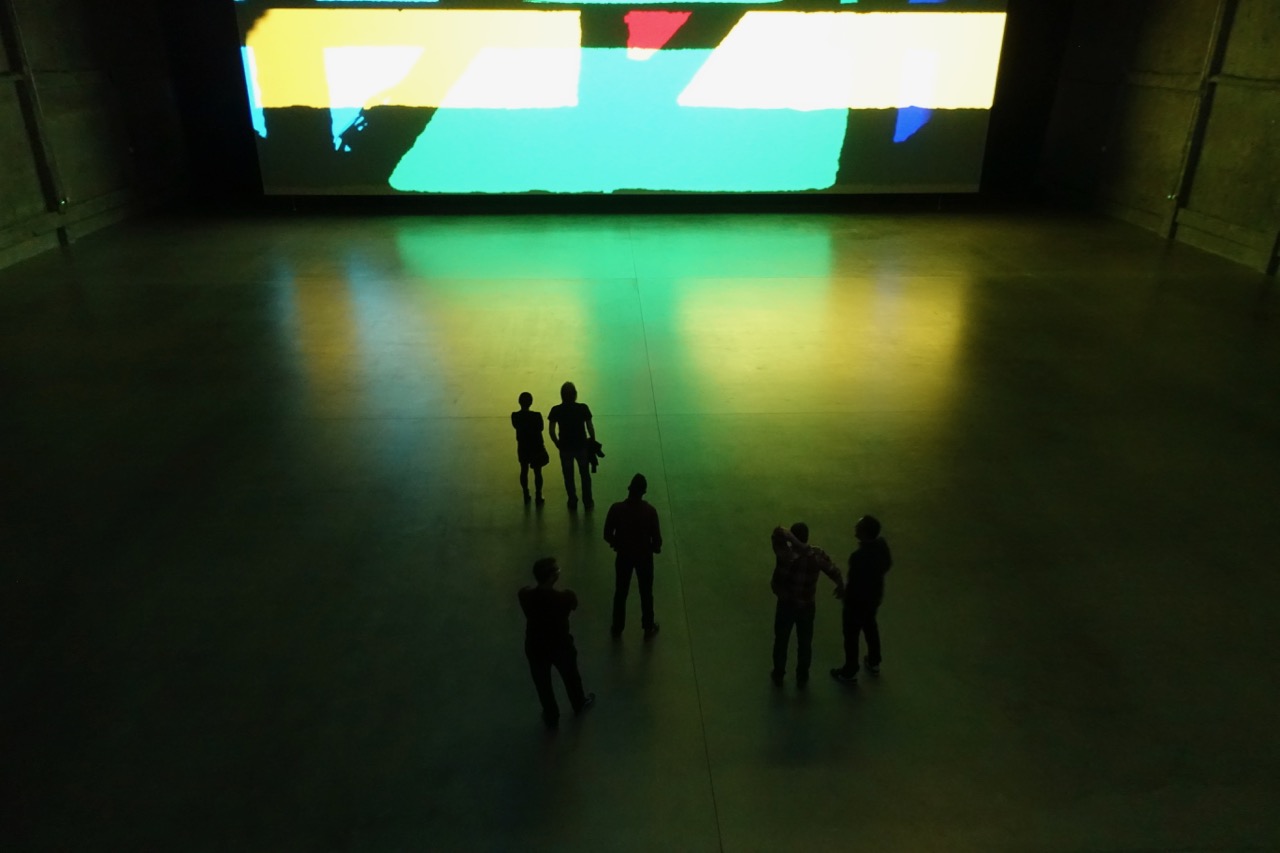In this post, we’re going to explain how to visit the Marciano Art Foundation’s wonderful new installation, Reality Projector, which is on view in LA until August 26, 2018. We have specific tips for bringing kids to this colorful show. But first, a bit of context about one of the artist’s prior exhibitions and how bringing a cellphone to an art experience changes the game.
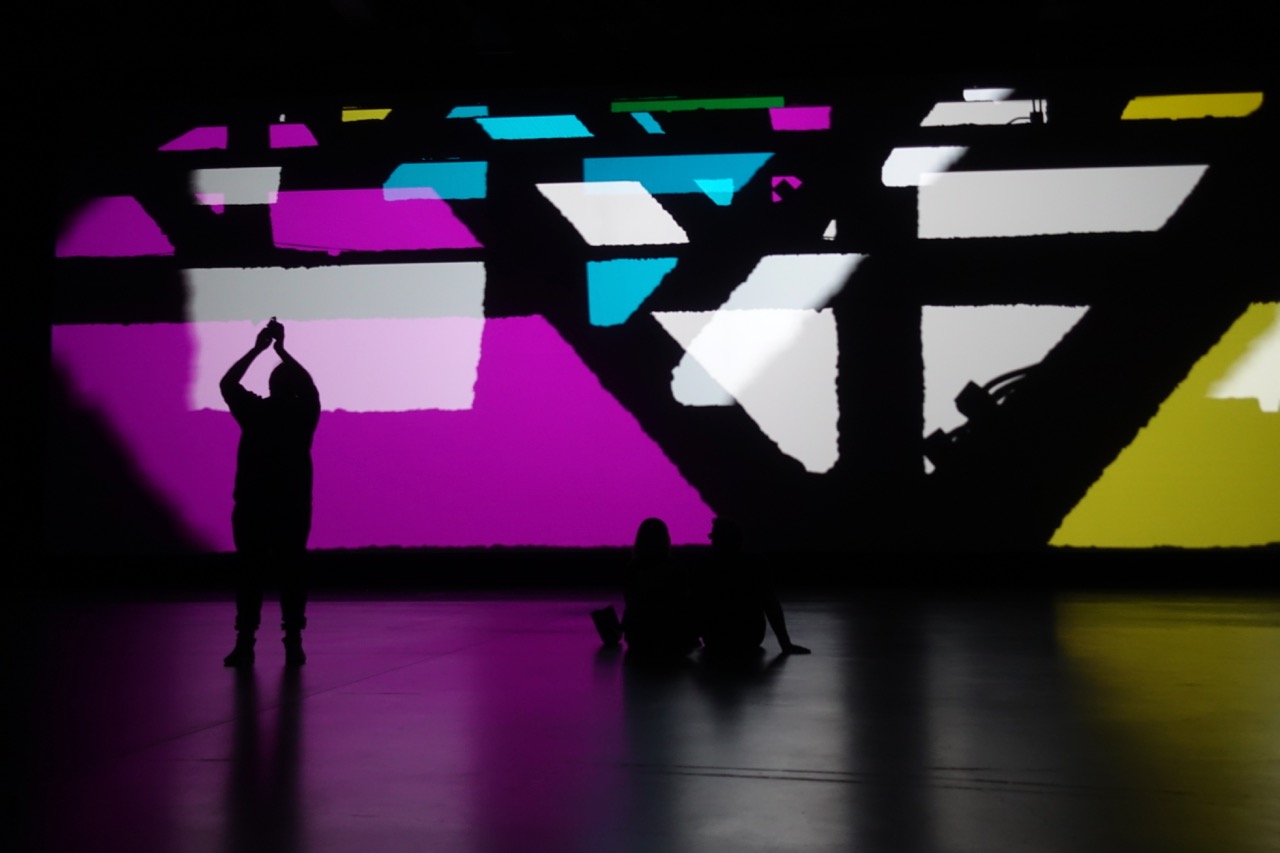 During the summer of 2008, I took my two middle-school aged kids to New York City for four days, enroute to a visit to the grandparents in MA. We had been loaned a spacious mid-town apartment and quickly learned that not staying in a hotel was stupendously great. We were able to enjoy breakfast on a luxurious terrace overlooking an eastside neighborhood, frolic in nearby Central Park, visit Dylan’s Candy Bar (it wasn’t yet an LA-thing), and revel in the antics of Blue Men Group. The kids learned to hail a taxi and realized that New Yorkers had to walk a LOT more than Angelenos.
During the summer of 2008, I took my two middle-school aged kids to New York City for four days, enroute to a visit to the grandparents in MA. We had been loaned a spacious mid-town apartment and quickly learned that not staying in a hotel was stupendously great. We were able to enjoy breakfast on a luxurious terrace overlooking an eastside neighborhood, frolic in nearby Central Park, visit Dylan’s Candy Bar (it wasn’t yet an LA-thing), and revel in the antics of Blue Men Group. The kids learned to hail a taxi and realized that New Yorkers had to walk a LOT more than Angelenos.
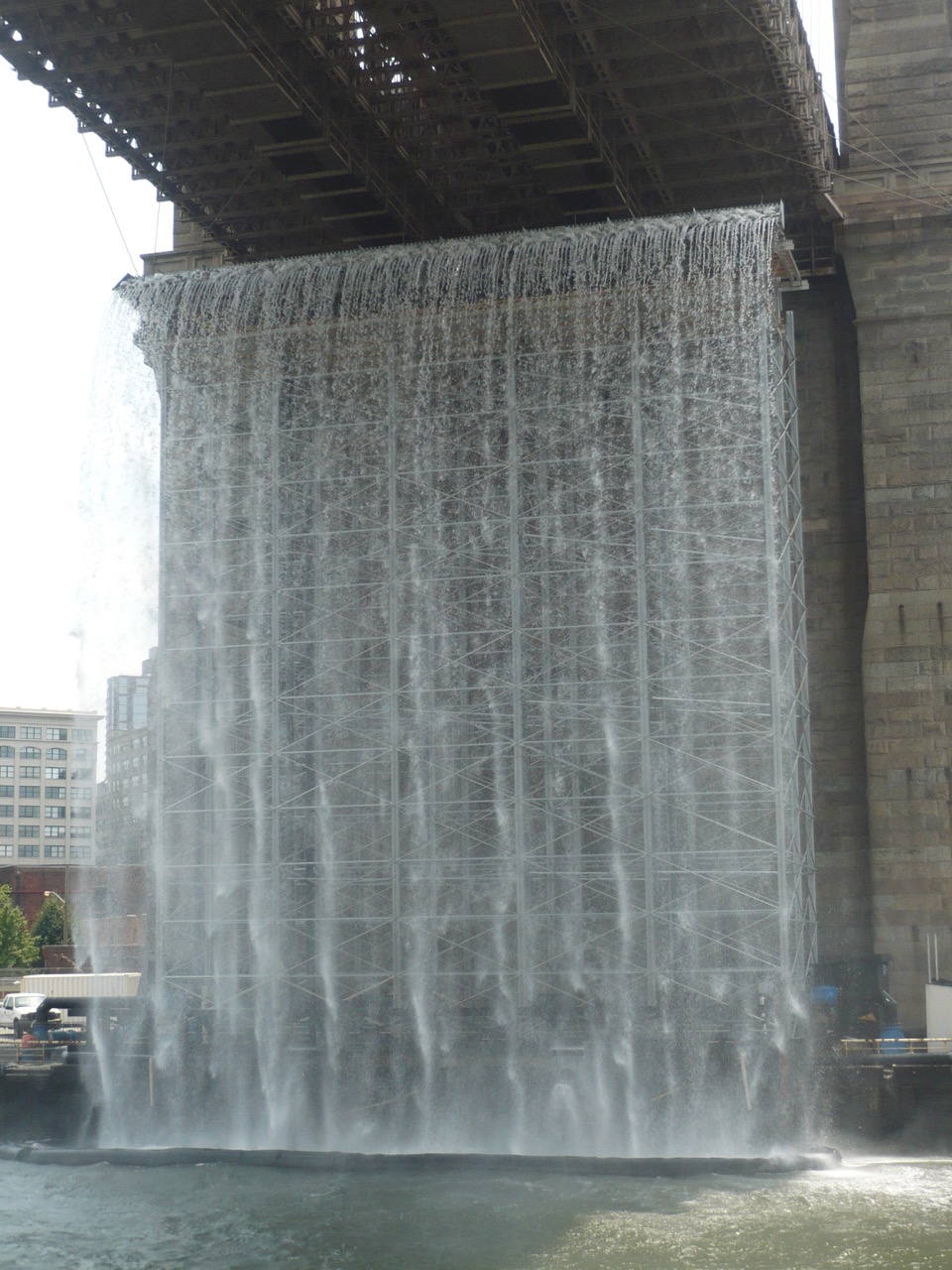
It was super hot in the city that week. To escape the humid stink, we took a Circle Line cruise around Manhattan. But, truth-be-told, I’d heard that an artist had built massive waterfalls under the bridges and on the docks of the East River, and so effectively tricked the kids into an art adventure. Thanks to the Public Art Fund, Dutch artist Olufur Eliasson was using the city (and the river) as his canvas. With the help of many crews of workers, he had created four waterfalls on the East River – under bridges, and on docks. Between gliding past Lady Liberty and feeding seagulls from the deck of the boat, we passed under the large public installation, New York City Waterfalls.
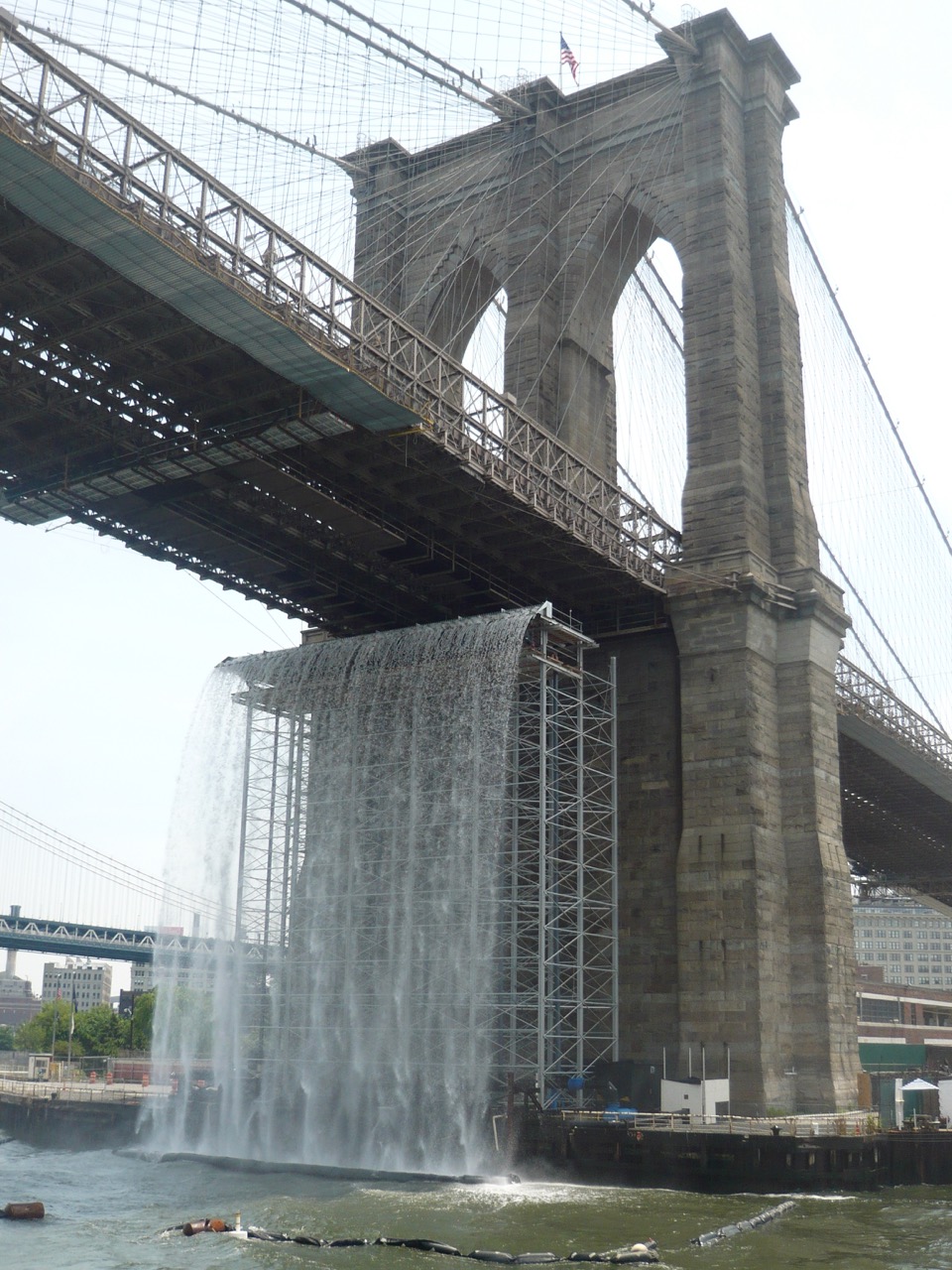
Olafsun’s work was designed specifically for the space – inspired by the history of the state of New York, the legacy of the city and her people. The waterfalls are so natural to the location that they almost seem to belong there – a seamless integration of art and function. I thought they were magnificent. The installations were taken down years ago, but you can see a video and learn more about the project here.
Making Memories?
The kids were nonplussed… cooled off by the air on the river, but not energized by either the tourism or the sight of the unusual waterfalls. Remember, this was 2008 and not every kid had a smartphone in their pockets. I had a big vacation-worthy camera around my neck, but their hands were in their pockets. They had not yet picked up the impulse to chronicle everything or stare at their screen. (They did think it was mildly cool when we passed under the bridges and some of the water sprayed on us but that was it).
Within a few years, they would be Snap and Instagram-obsessed, iPhones glued to their hands – eager for anything out of the ordinary to photograph and share with their friends. Indeed, they would have had a blast Snapchatting the waterfalls, taking selfies with the State of Liberty, and Instagraming something iconic from their big NYC adventure. It is hard to imagine going to a museum with kids today and not having photography be a part of the experience – adults want to chronicle everything and kids want to get some cool shots to share with their social networks. In fact, there are now pop-up art installations with the sole purpose of providing Insta-worthy images.
Are we to think that this is progress? Would they have remembered the waterfall more distinctly if they’d been able to Snap it? Do adults remember a piece of art more if we photograph it, or do we diminish the whole experience by putting the camera lens in between ourselves and the pure experience. It’s hard to know the answer, but one thing is clear: museums are doing their best to allow visitors to take photographs of the art and memorialize the experience. It’s good for business.
Olafur Eliasson pushes the boundaries of art consumption norms, and his projects are beautiful and complex. He brought icebergs to the Paris Climate Talks and cast a huge sun in the Tate Modern. His new installation in Los Angeles is a magnificent transformation of the vast theatrical space of the Marciano Art Foundation in Hancock Park. The artist visited the space when it was utterly raw, was inspired by the history of the Masonic Lodge and the role film in LA, and the result is Reality Projection. The site-specifity and purity of his design is stunning once you dig in and understand it.
Hip to the idea that we all like to snap photos with our phones, Eliasson wants more from us in this show. Eliasson invites us to experience his work in situ, and then do the work of figuring out how it was made and what it means. He references film history, and the work of being a viewer. He is interested in perception, and how it is created – in person, in film, and maybe even in the universe. What’s interesting about his work is that it’s very hard to capture in a book or online – we researched previous work in the bookstore at the MAF, and his work demands interaction. It’s doesn’t necessarily come through on the page, because interacting in the space is a key component to the work.
We invite you to get to the Marciano and interact with this work – here’s how it worked for us.
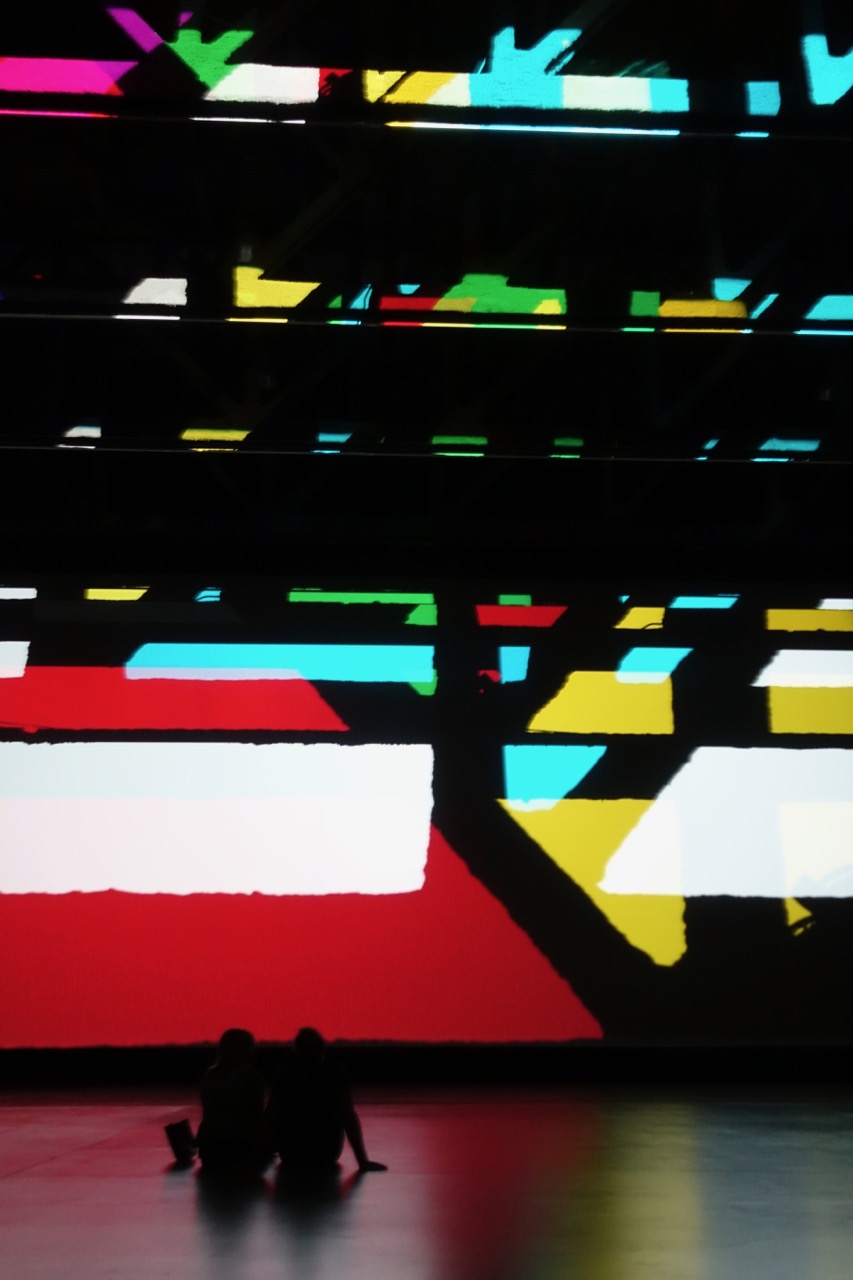
Visiting the Show:
Visitors pass through two dark curtained spaces, acclimating their eyes before walking into the space. We were encouraged to “enjoy our visit” and told we could sit/stand/lie down to take in the experience. Kids will absolutely love this freedom and the total immersion in the colors and sound.
We sank to a seated position and just watched. The soundtrack, produced in collaboration with Jónsi, sounds at times sounded like a motor cycle, and other times, like boats clanking together at a mooring and still others like ships passing in the night. (Jónsi is a pretty big deal – ask a millennial). Actually, the sounds are a recording of a piano being assembled; in this case, the piano refers to John Cage’s “Prepared Piano” – click here to learn about it. So, spend some time immersing yourself in the imagery and appreciating the sound track.
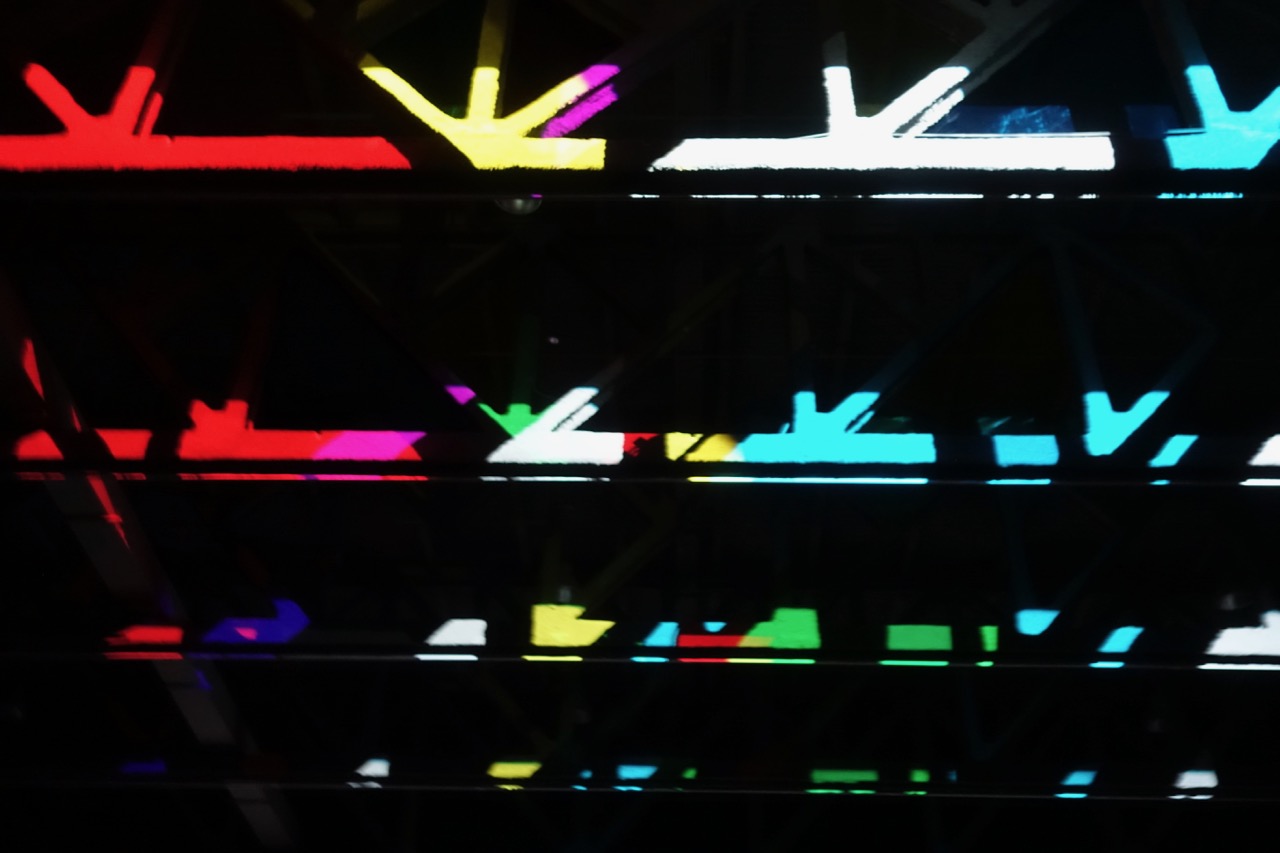
Then, once you are visually sated and the questions have begun to pile up in your head, walk up to the Mezzanine level to observe the theater from above. There’s you’ll be able to understand how the show is constructed. You’ll see that big lights travel cross a track in the ceiling, illuminating several gels which are taped into the spaces of the ceiling’s column supports. The gels are the colors that make up Technicolor film – magenta, cyan, and yellow. The performance of color and shape comes from the beams of sliding light projected through the gels and the structure of the ceiling. It’s all stunningly simple.
Kids Can Think About This:
We had a lot of math questions, and this is probably a good level for discussion with kids: how long would it take to sit through a whole cycle of this show? Is there a beginning and an end? How many variations of colors and shapes would it inevitably produce? Was it infinite, or just a ridiculously large number?
And all those shapes – can the kids name them as they glide by? Triangles, parallelograms, and more.
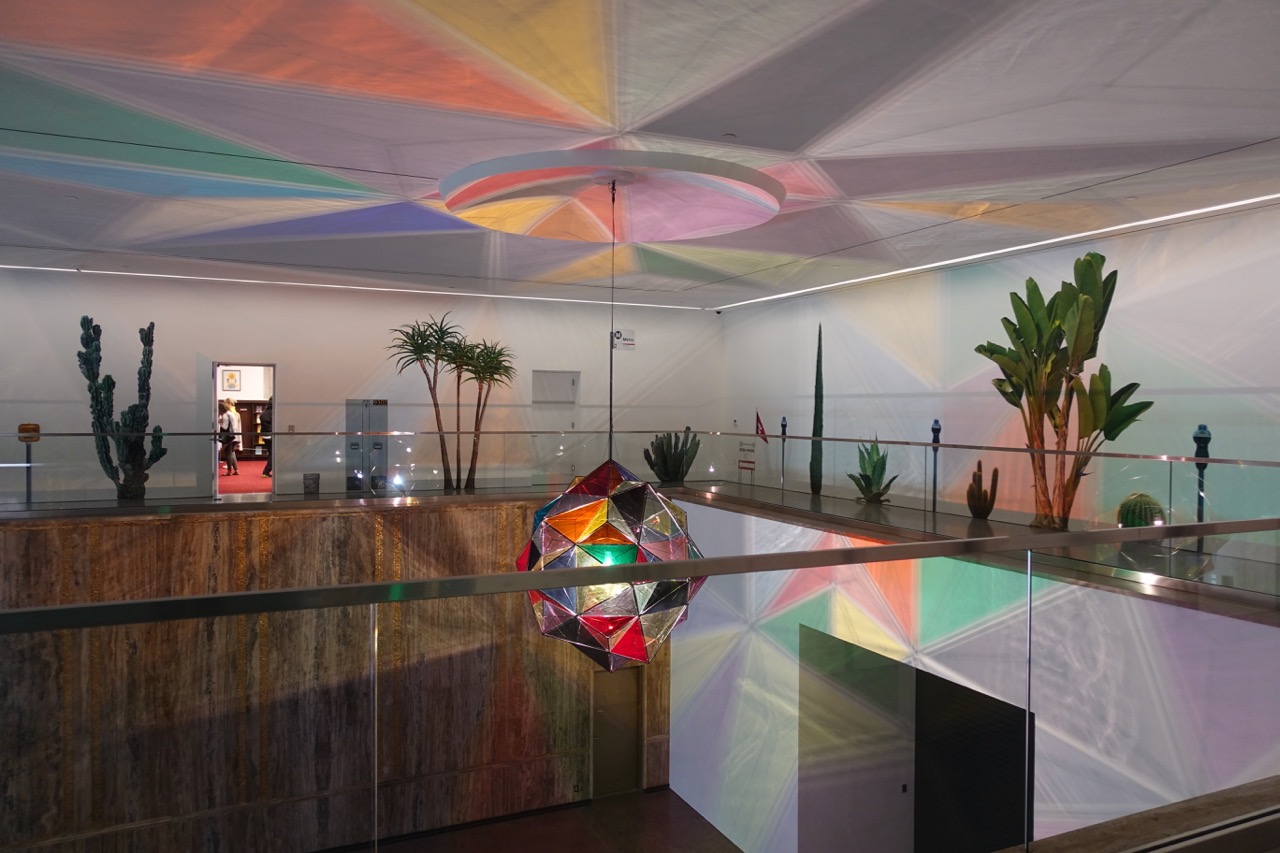
What is the artist asking… or telling? His lobby lights hint at celestial issues and to sit in the space for any amount of time is to slip into a meditative state. What does he want us to think about? Here is a clip of Eliasson talking about what he wants the audience to consider. Watch it together and see if the kids have any further ideas.
Pro Tip: We learned a lot by speaking with one of the museum’s informed guards. Teach the kids to ASK questions – there’s much to be discovered.
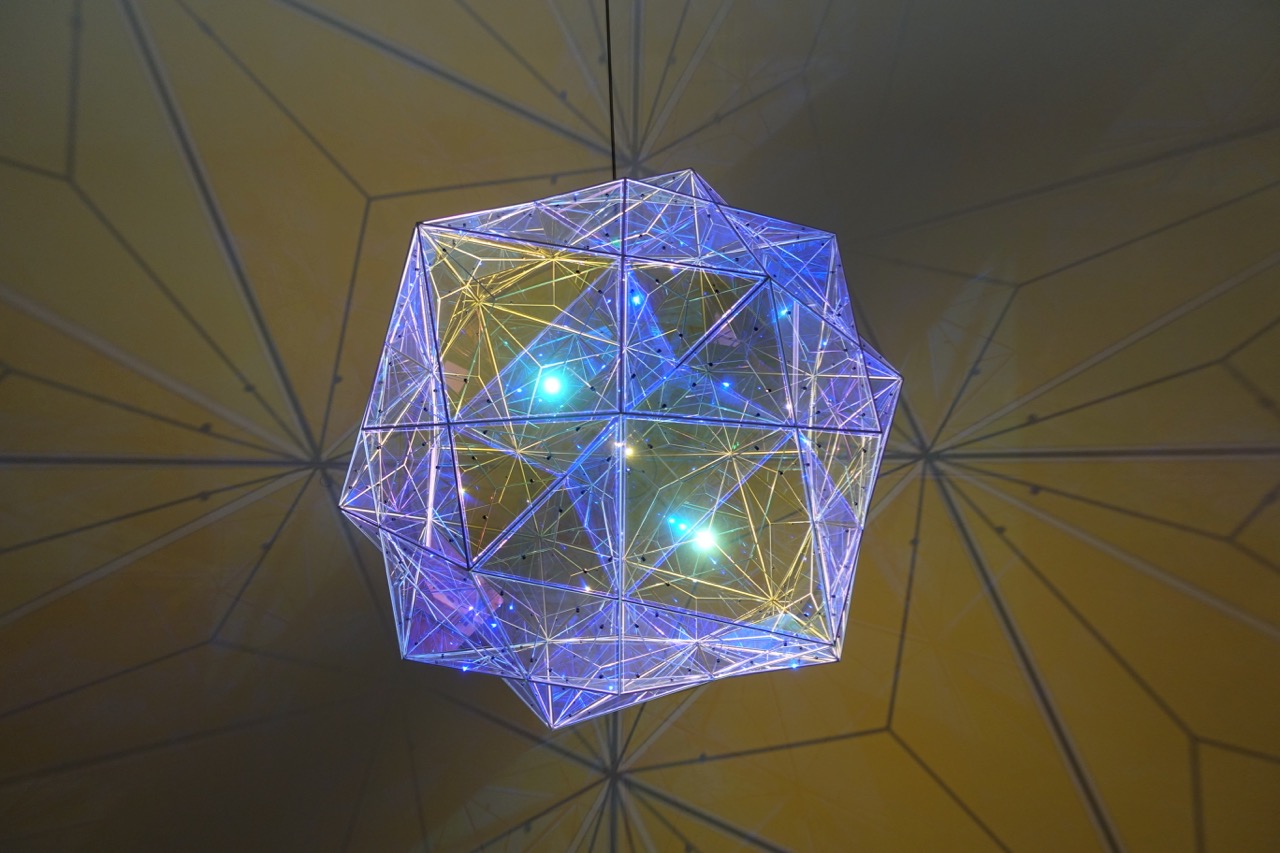
Eliasson created two orbital lights for the Foundation’s copious lobby – a hint of what is to come inside the theater. Here are their projections onto the ceiling.
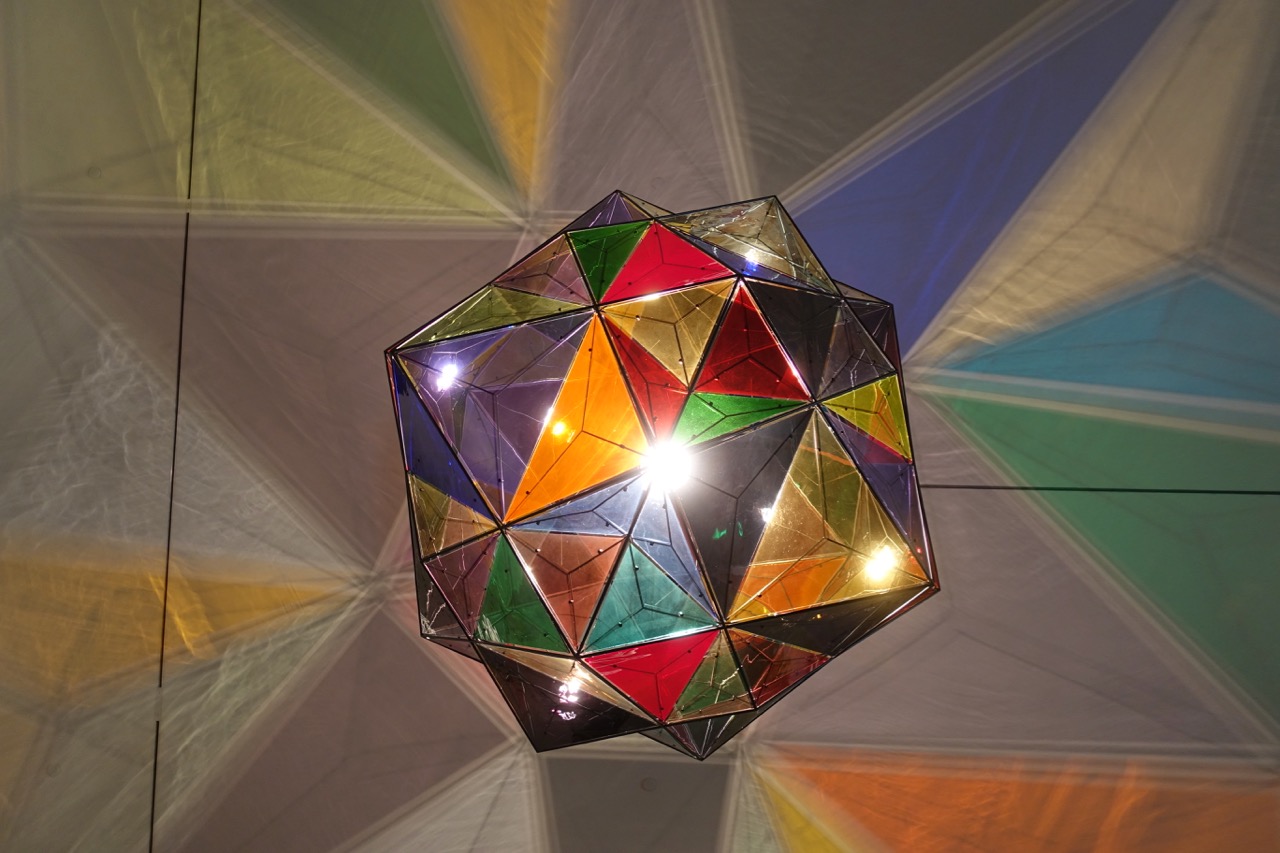
As described in our previous post on the MAF, the building was created to be a Masonic Lodge – the Masons being a form of networking fraternity for grown up men (mostly), with a curious past that included lots of dressing up and ritualistic events. Make a point to stop into the small room on the Mezzanine to learn about the Masons, and perhaps you’ll wonder – as we did – whether the stained glass window in this room also helped Eliasson come up with his concept for Reality Projection. 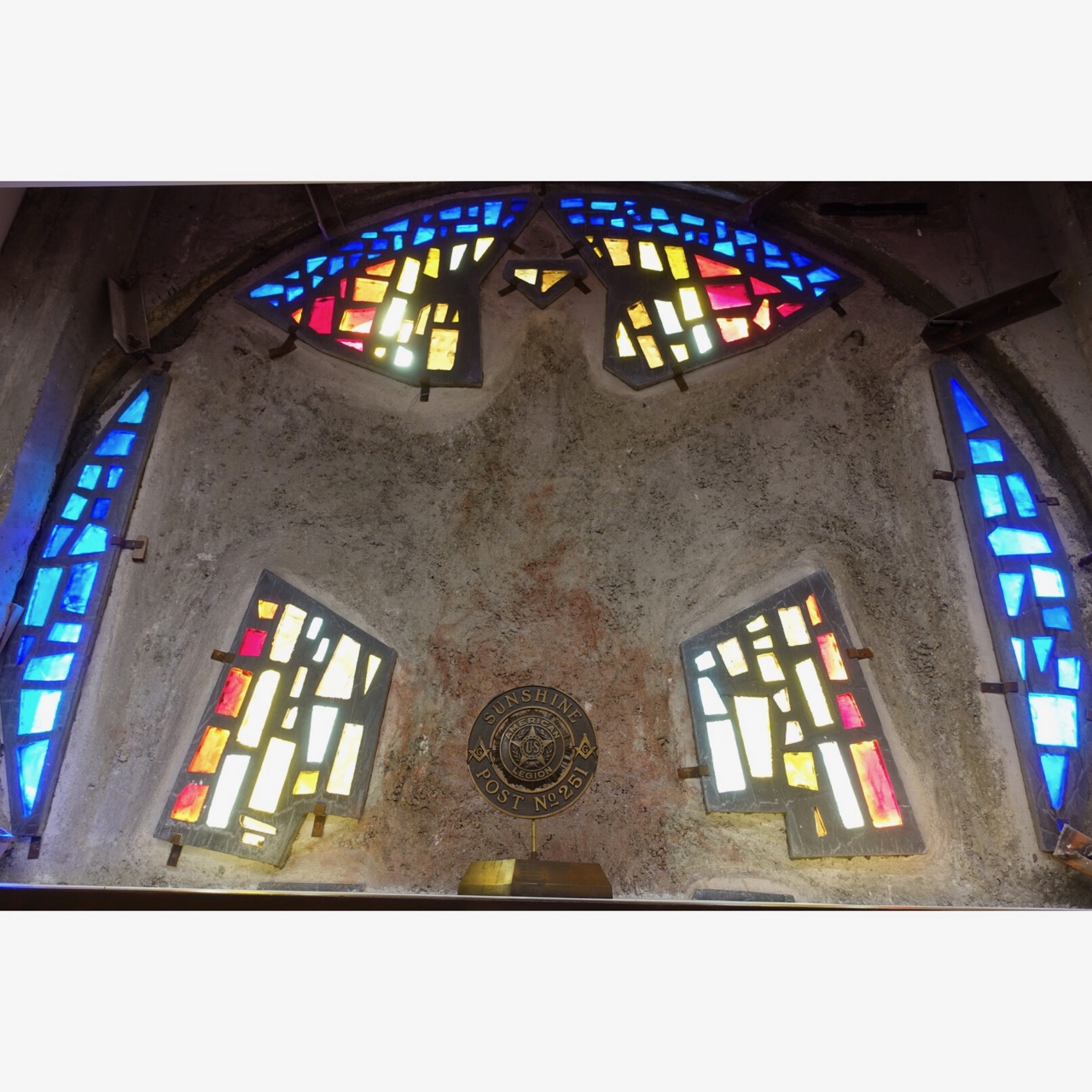
Extra Credit:
The New Yorker profiled Eliasson when he brought icebergs to the Paris Climate Talks (2015). Read about that here.
Here is a TED Talk from 2009 in which Olaf discusses
How to Visit the Marciano Art Foundation:
Entrance is free, but you need to reserve a space online (click here). This show is on view through August, 26, 2018. You can visit the permanent collection on the third floor full of interesting items, and be sure to ask for the Millard Sheets mosaic, which is hidden behind a removable wall but is worth a peek. Here’s a detail:

We discovered two painters we hadn’t known before – Gabriel Orozco (Mexican, b. 1962) and a new artist Torey Thornton (American, b. 1990).
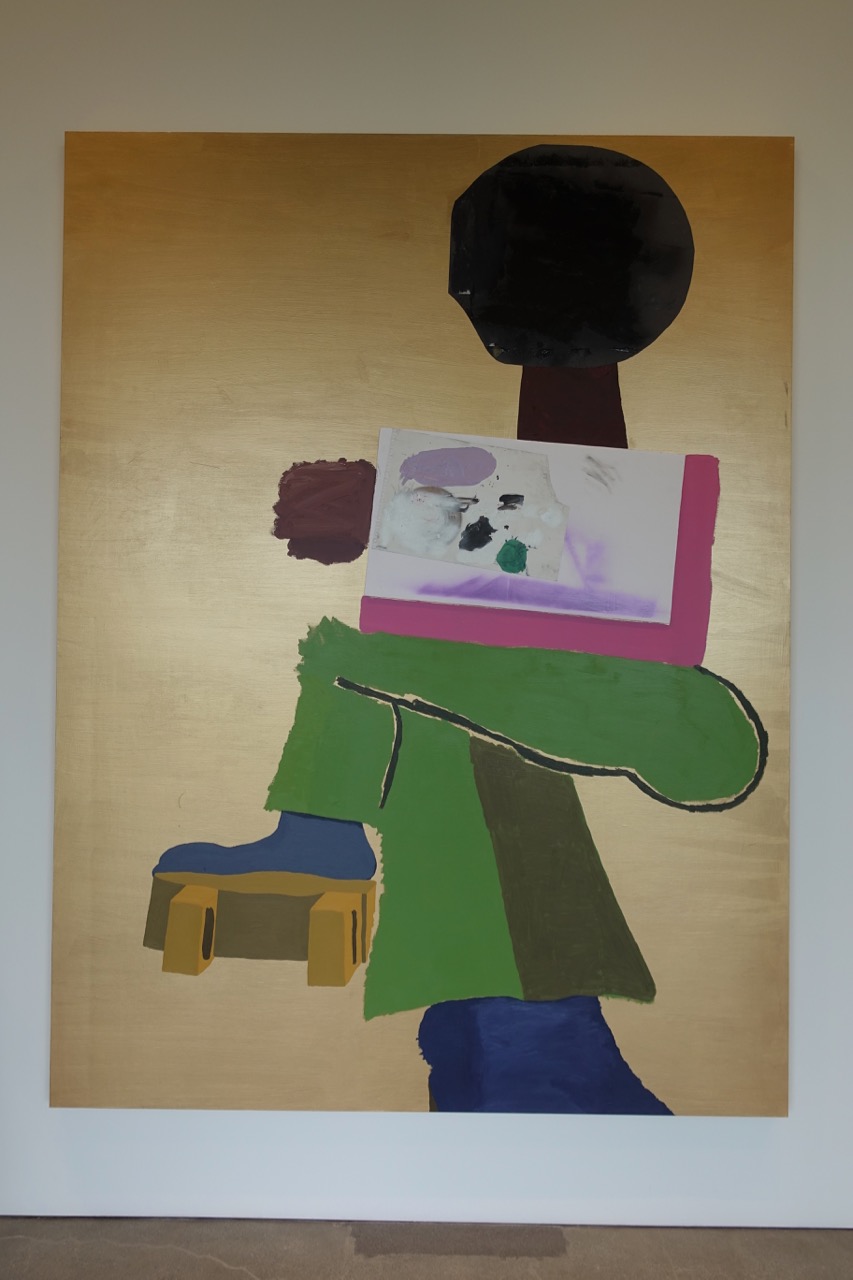
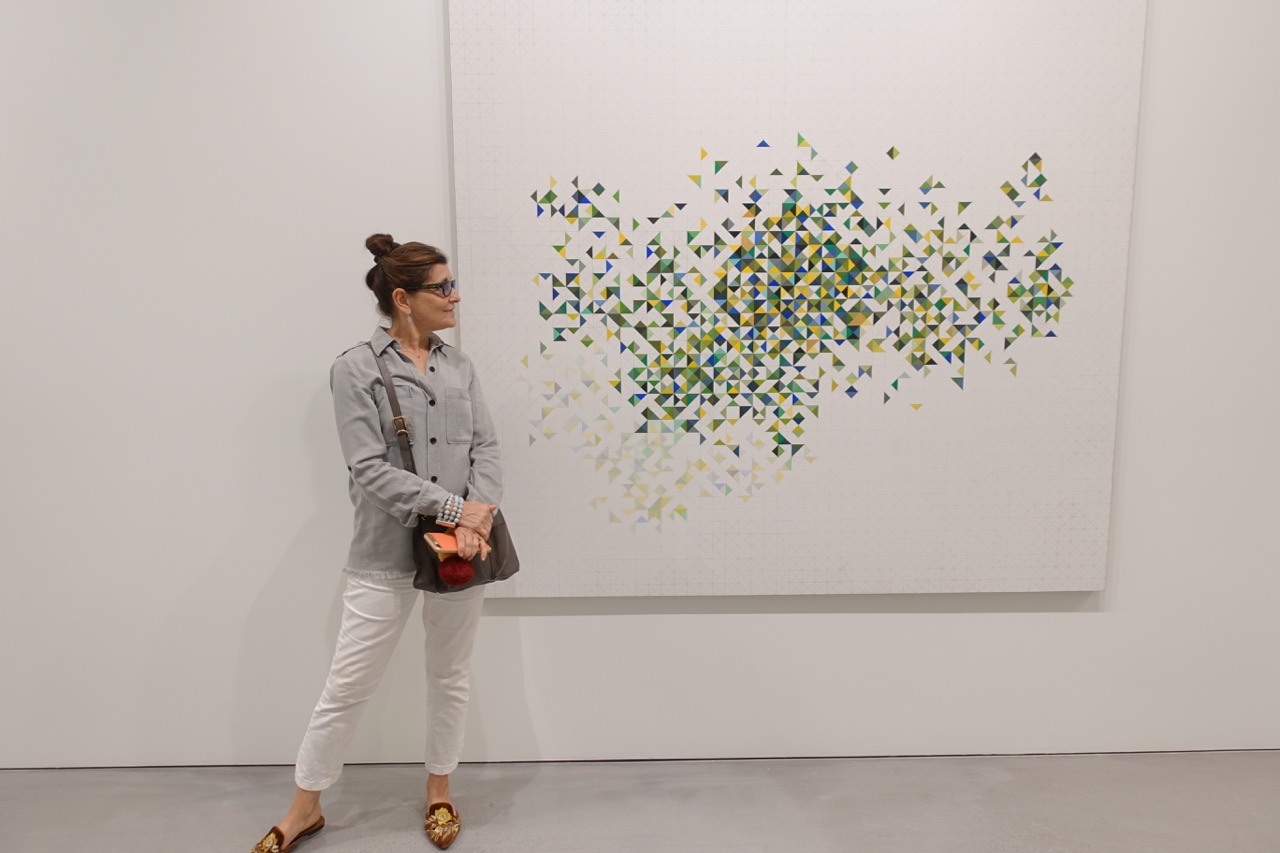
Marciano Art Foundation / 4357 Wilshire Boulevard /Los Angeles, CA 90010 (424) 204-7555 – Closed Monday-Wednesday
Located three blocks west of the Crenshaw/Wilshire intersection, on the north side of Wilshire Boulevard. Parking onsite or on neighboring streets.
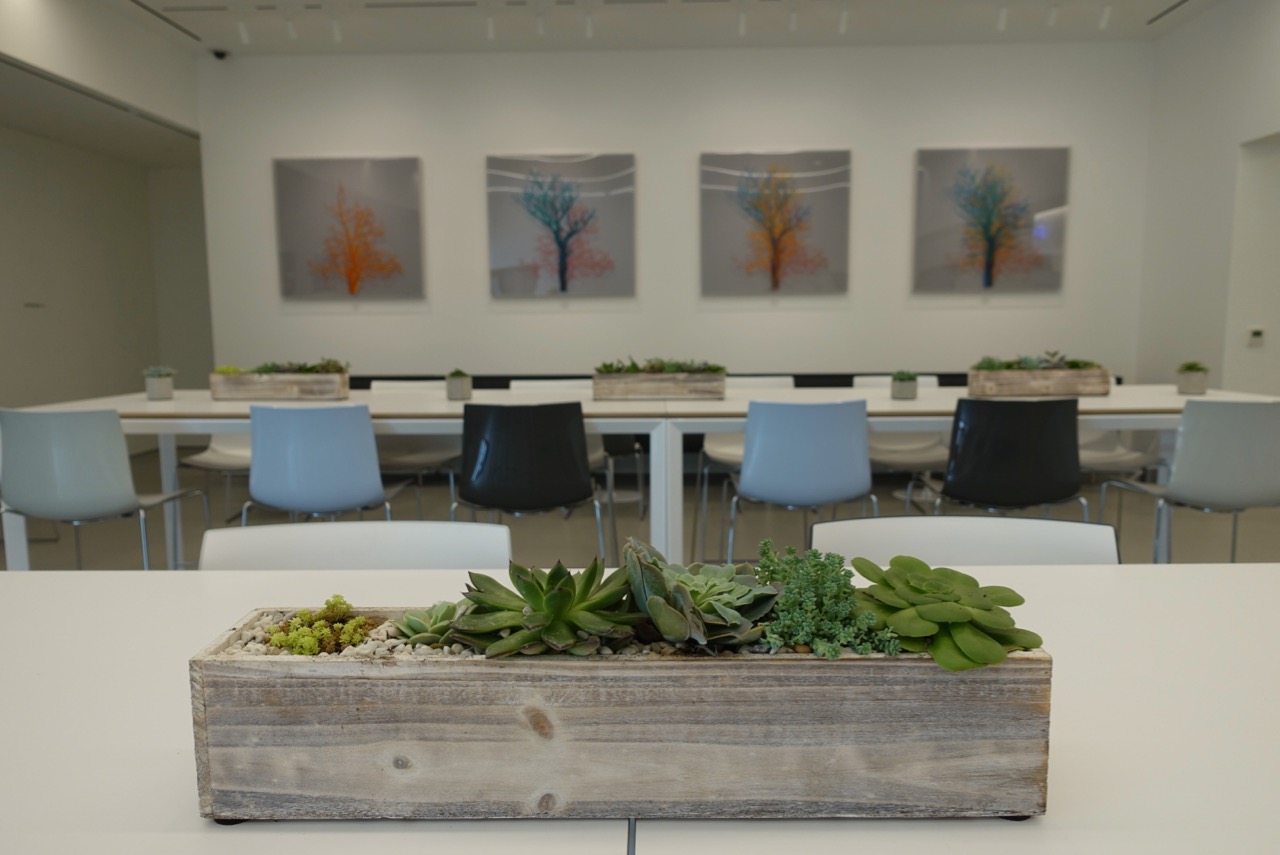
Also onsite are a nice bookstore and a delicious cafe.

